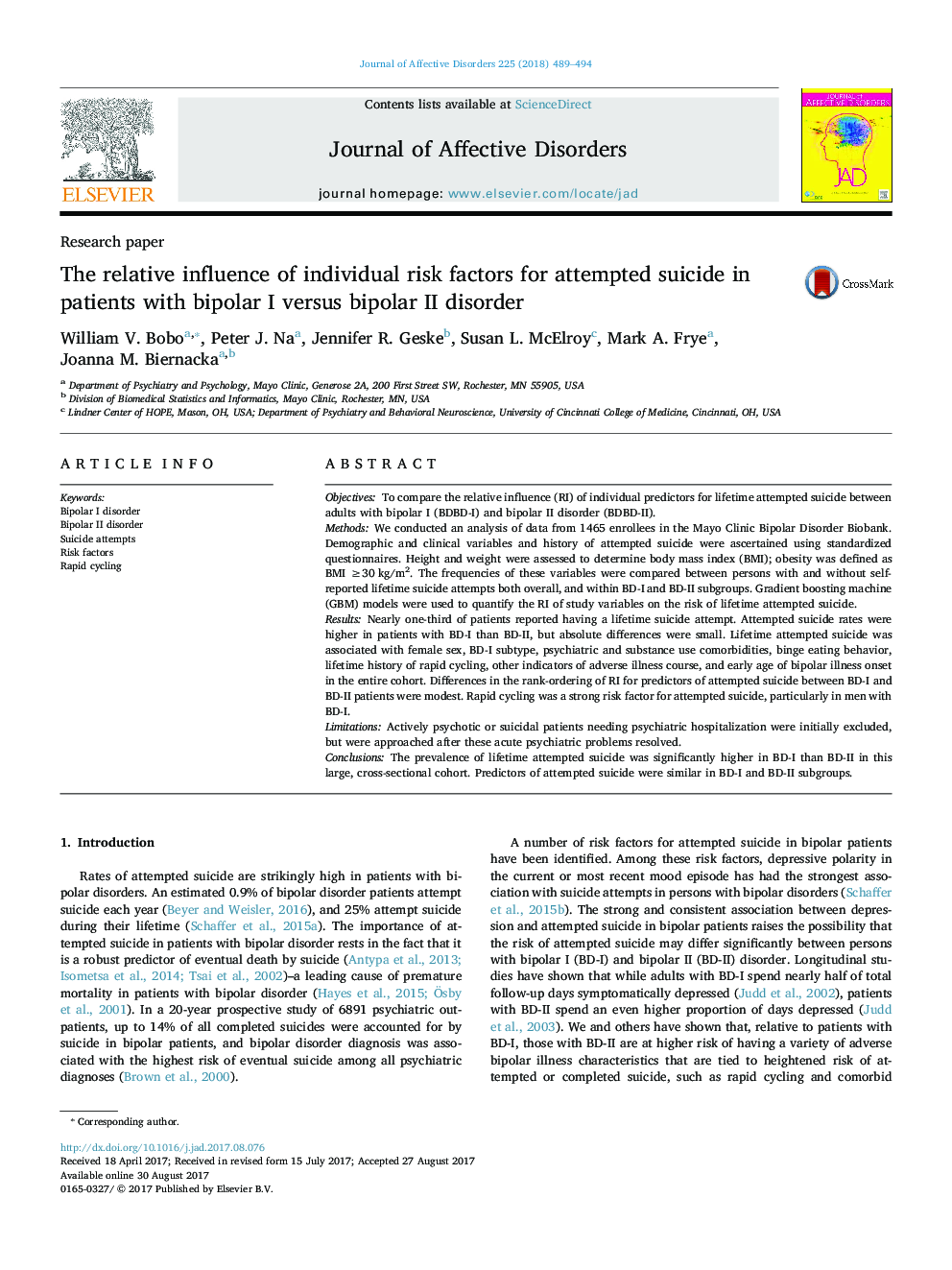| کد مقاله | کد نشریه | سال انتشار | مقاله انگلیسی | نسخه تمام متن |
|---|---|---|---|---|
| 5721751 | 1608100 | 2018 | 6 صفحه PDF | دانلود رایگان |
- We compared the relative influence of individual predictors of lifetime attempted suicide in 1465 adults with bipolar I and II disorder.
- The most influential predictors were female sex, lifetime rapid cycling, nicotine dependence, increased episode severity over time, and bipolar (I vs. II) subtype.
- Differences in the rank-ordering of RI for predictors of attempted suicide between BP-I and BP-II patients were modest.
- Rapid cycling was a strong risk factor for attempted suicide, particularly in men with BP-I.
ObjectivesTo compare the relative influence (RI) of individual predictors for lifetime attempted suicide between adults with bipolar I (BDBD-I) and bipolar II disorder (BDBD-II).MethodsWe conducted an analysis of data from 1465 enrollees in the Mayo Clinic Bipolar Disorder Biobank. Demographic and clinical variables and history of attempted suicide were ascertained using standardized questionnaires. Height and weight were assessed to determine body mass index (BMI); obesity was defined as BMI â¥30 kg/m2. The frequencies of these variables were compared between persons with and without self-reported lifetime suicide attempts both overall, and within BD-I and BD-II subgroups. Gradient boosting machine (GBM) models were used to quantify the RI of study variables on the risk of lifetime attempted suicide.ResultsNearly one-third of patients reported having a lifetime suicide attempt. Attempted suicide rates were higher in patients with BD-I than BD-II, but absolute differences were small. Lifetime attempted suicide was associated with female sex, BD-I subtype, psychiatric and substance use comorbidities, binge eating behavior, lifetime history of rapid cycling, other indicators of adverse illness course, and early age of bipolar illness onset in the entire cohort. Differences in the rank-ordering of RI for predictors of attempted suicide between BD-I and BD-II patients were modest. Rapid cycling was a strong risk factor for attempted suicide, particularly in men with BD-I.LimitationsActively psychotic or suicidal patients needing psychiatric hospitalization were initially excluded, but were approached after these acute psychiatric problems resolved.ConclusionsThe prevalence of lifetime attempted suicide was significantly higher in BD-I than BD-II in this large, cross-sectional cohort. Predictors of attempted suicide were similar in BD-I and BD-II subgroups.
Journal: Journal of Affective Disorders - Volume 225, 1 January 2018, Pages 489-494
